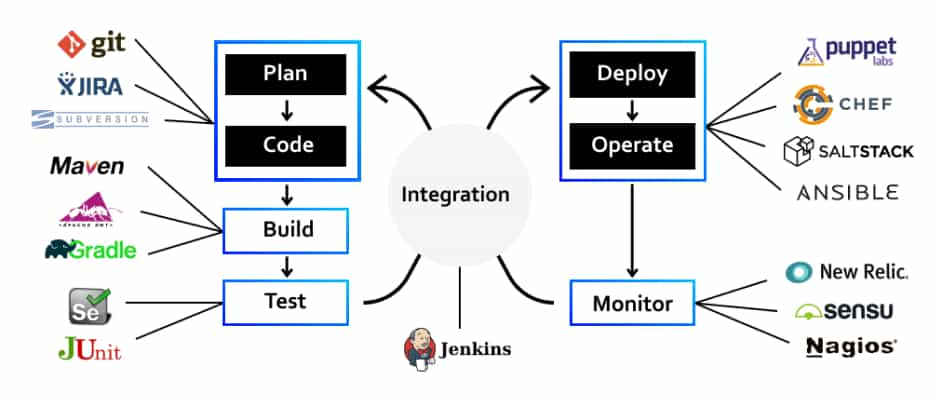Since the early 2000s, Agile methods have evolved and gained widespread adoption in large and SMB organizations. Agile methodologies and practices have become popular due to their ability to demonstrate ROI for software development. In fact, Agile usage has increased from 37% in 2020 to 86% in 2021. Agile concepts, like daily stand-ups, backlog grooming, and regular cadences, have become everyday occurrences for many who deliver IT solutions. Many companies have adopted Agile using a bottom-up approach, typically starting with their core development teams. Many other companies have not been able to increase efficiencies and ROI because they could not scale Agile vertically throughout their enterprises.
How can enterprises scale Agile, and what exactly does it mean for an enterprise to be Agile? How can everyone in the organization — the development teams and non-technical departments — use Agile best practices to drive value for companies and their products?
This white paper will discuss issues that arise when scaling and adopting Agile mindset and practices throughout an organization. In response to these issues, Nisum will present four key considerations that organizations need to deploy in order to help them maximize their potential with successful enterprise Agile implementations. The final point of this paper is to demonstrate how using Nisum's Enterprise Agile Framework (NEAF) increased time to market by 20% for one of our Fortune 500 clients.
Being an Agile enterprise is no longer optional — it's a necessity.
Agile has become the standard software development framework used across most industries. Agile methodology was created to be a better framework for software development than the more traditional waterfall method. In many regards, Agile has succeeded by consistently delivering software of value in quicker iterations. Agile has proven its worth, and there is general acceptance in software circles that, when done well, Agile is good for the team, the customer, and the entire organization. After twenty years of maturity and following the principles of continuous improvement, executives are now asking, "How can we scale Agile at an enterprise level to bring this mindset to the rest of the company?"
Most companies today use Agile mainly at a team or product level. The challenge lies in scaling Agile to work in complicated settings, with larger cross-functional teams, in conjunction with ever more complex systems, longer timelines, and diverse operating environments using multiple engineering disciplines.
Scaling Agile means similar sustainable processes are dispersed to multiple teams, projects, or products under the same organizational umbrella. It is important to note that these processes need to survive larger workgroups and be sustainable across multiple platforms. Scaling Agile at an enterprise level is not isolated amongst technical departments. It also means adoption across non-technical teams, such as human resources, marketing, and finance. This topic is beyond the scope of this paper but essential enough to be pointed out, at least in concept. This paper focuses on what enterprises need to strive for and what they need to watch out for when implementing and scaling Agile methodology.
A specific team is chosen to use the Agile methodology, while the rest of the organization continues using previous models. In many cases, this team may not fully understand Agile. Yet, they capture experiences and lessons learned to build a blueprint for the rest of the organization to scale the entire methodology.
Management recognizes pilot team(s) progress with Agile and decides to roll out Agile incrementally to a selected number of additional teams. While more teams may be using Agile, there may not be a cohesive organizational standard.

Shami Ahuja,
VP, Client Delivery
Scaling Agile methodology to an enterprise level is a paradigm shift and requires all levels of the enterprise, from developers to executives, to gain a deep understanding of 'being' Agile.
For organizations to be more flexible to market changes and grab market share early to build brands, building a product-centric, innovative culture and a bottom-up leadership approach can go a long way. It requires patience and practic
Management has seen the potential in Agile and grants special privileges to still more teams to validate their Agile methodology blueprint. Though the individual teams may be successful, they still may not understand how to best scale beyond their group. The result is that they cannot capitalize on the same value for the rest of the organization. Like with the pilot team, top-down teams will often find themselves siloed and disconnected from other development teams in the organization..
Top-down teams get their mandates from the higher levels of their organization; thus, executing such projects is more centralized. The need to deploy quickly to meet changing market conditions is complex, and scaling Agile to the entire organization will require a maturing period that will include additional expenses for management, training, and opportunity costs.
Six Main Reasons Why Agile Teams Fail
In all of the above scenarios, the underlying issue is the inability of an organization to scale the tried and tested process to an enterprise level or sustain it long enough to deliver benefits. An example of this can be seen in how the critical role of the scrum master is deployed. If the scrum master has minimal Agile experience, they are unlikely to upskill the team as the sprints are in progress.
Executive-to-team-level involvement needs to be aligned and help create sustainable processes for the teams. Luckily, scaling frameworks like SAFe and LeSS are available. Using either of these allows companies to get teams fully integrated and on track with the proper work. These frameworks are a good starting point for discussion when considering Agile at an organizational level. Scaling frameworks also help resolve the tension between the team, product goals, and the organization by aligning them with corporate goals. However, these frameworks need to be assessed before being chosen and implemented.
Agile implementation can present many variables, and several challenges arise. Here are some of the most common challenges Nisum has seen:
A typical example of where companies fall short of using Agile is when they do not perform retrospectives. In Agile, retrospectives are vital because they offer a chance to eliminate any disconnect between team members and leads after each iteration.
Enterprises using Agile will need to shift their hierarchy from a top-down to a more horizontal structure. Turning to an Agile mindset requires changes and intervention at various company levels. It requires a cultural shift at a molecular level, and management styles need to change with it. In general, Agile teams are incredibly self-organized and require less day-to-day involvement and interference from management. Enterprises need to commit to the Agile mindset to effectively scale it to an enterprise level.
Nisum has identified four essential factors enterprises should follow when scaling Agile:
One of the more popular pre-built frameworks for Agile teams is called Scrum. It is a framework that allows people to address complex and ever-changing challenges using simple ritualized processes and cultural changes. These processes enable a cultural shift in mindset that makes Scrum an effective tool for implementing Agile practices in your company.
Once the vision is aligned, planning must be streamlined throughout the organization. One problem enterprises encounter is that the dependency of cross-functional teams is not aligned. Planning improves when this is addressed, which means better and more accurate budgets. Accurate levels of effort and budgets will, in turn, improve work estimations which will have a direct and positive impact on ROI and time to market.
Teams will improve and self-organize as the organizational hierarchy shifts from a top-down to a more horizontal Agile structure. They will also improve their alignment, planning, and execution at the micro-level. Execution is essential to making this happen; it aligns product owners, developers, and testers.

Streamlined execution will naturally improve implementation, and the benefits will flow back up to the organization. Product managers play a role in streamlining execution by ensuring performance stays aligned with organizational views and goals.
Product managers are crucial to digital business success, orchestrating stakeholders and teams to deliver better product and financial outcomes.
- Gartner, "Product Managers Are Key to Digital Business Success"
DevOps is the combination of cultural philosophies, practices, and tools that increases an organization’s ability to deliver applications and services at high velocity: evolving and improving products at a faster pace than organizations using traditional software development and infrastructure management processes.
Implementing the DevOps practices enhances aligning, planning, and executing by providing a platform to help continuously deliver value to enterprises and capitalize on their full potential.
IT and product management are inundated with pressure to keep up with market changes. Enterprises that want to remain relevant can use Agile and DevOps to meet this demand. Enterprises that were doing 8 to 10 releases a month (pre-Agile) can now perform multiple releases per day.
DevOps empowers an Agile team to improve its delivery time by implementing the appropriate tools, infrastructure, and automation services needed to keep its software products relevant. Continuously improving the process means deploying higher-quality software and responding more quickly to customer requests.
The graphic below highlights how DevOps acts as the central hub of a complete software development lifecycle.

Agile and Dev Ops provide opportunities to reduce delivery cycle times as technical complexity increases because:
Scaled Agile explains how DevOps plays a crucial role in the successful execution of an organization's plans, goals, and vision:
![]()
Imagine a world where product owners, Development, QA, IT Operations, and Infosec work together, not only to help each other, but also to ensure that the overall organization succeeds.
By working toward a common goal, they enable the fast flow of planned work into production, while achieving world-class stability, reliability, availability, and security.

The mindset change needed to scale Agile needs good staff morale. An invaluable asset in any organization is its employees. The organization needs to ensure that the employees know that they are appreciated and never assume that they already know this. Public praise and recognition for achievements go a long way in boosting employee morale.
requires more than putting out a suggestion box. For instance, the developers could have an annual hackathon to create their hacking teams to improve a specific company product or procedure. This hackathon need not be limited to developers but could also include managers, product owners, and marketing and sales staffers, to name a few.
is a common hurdle in enterprise agility. Any lack of trust and transparency between teams causes scaling to suffer. When this occurs, treat it as a warning sign that not everyone is aligned with the organization's goals and vision. It's essential to acknowledge this and execute strategies to overcome these hurdles to scale successfully.
One successful strategy is to adopt Radical Transparency. This concept will help to ensure that everyone remains aligned when external challenges cause internal changes to roadmaps, schedules, and even resource assignments.
Radical transparency is a phrase used across fields of governance, politics, software design and business to describe actions and approaches that radically increase the openness of organizational process and data. Its usage was originally understood as an approach or act that uses abundant networked information to access previously confidential organizational process or outcome data.
Reward self-organizing teams and individuals for their achievements. Rewards can take many forms like bonuses, written praise, thank you notes, and verbal recognition at large meetings. Additionally, have project completion ceremonies and celebrate projects completed early or showed exceptional innovation on new features.
Enterprises invest millions of dollars in improving processes and technology but struggle to validate their investment. Metrics-driven management will provide leadership and Agile with data to justify the work. Here are five ways to quantify value when scaling Agile.

Nisum Enterprise Agile Framework (NEAF) Improves Time-to-Market by ~20%
A Fortune 500 grocery client faced challenges with planning, executing, and delivering critical business initiatives and could not keep up with changing business needs. The waterfall project management methodology practiced by the organization led to delays and diminished engagement of team members.
Nisum created an Agile transformation roadmap based on the Nisum Enterprise Agile Framework (NEAF). This reduced delays and planning time and increased team motivation.
Agile transformation established a product-centric structure and changed the working culture, which led to:


Read more about this success story at Nisum Helps Improve Initiative Time-to-Market by ~20% Through Agile Transformation.
Enterprises need to have some Agile principles that they can abide by and then develop Agile practices that fit the organization. The sustainability of these processes and principles are required for successful scaling. The sooner enterprises realize the value in scaling Agile, the faster they can harvest its benefits.
For organizations to be more flexible to market changes and grab market share early to build brands, building a product-centric and innovative culture and a bottom-up leadership approach can go a long way. It requires patience and practice.
Large organizations have found that Nisum gives them a competitive edge through lean and Agile coaching. They're using Nisum to build change management systems that address critical organizational challenges related to team efficiency. Contact us if you need help scaling your Agile processes to the Enterprise level.
Nisum’s Business Agility is an experienced partner who orchestrates measurable, holistic Agile transformation anchored in cultural change and enabled by technology excellence. Nisum has a team of full-service certified agility experts who seamlessly integrate with clients from a cultural and mindset change perspective.
For more information on the business benefits of an Agile enterprise, take our free assessment, How Agile is Your Business? or reach out to us for a free consultation today.
Reach out to learn how we can help your business.